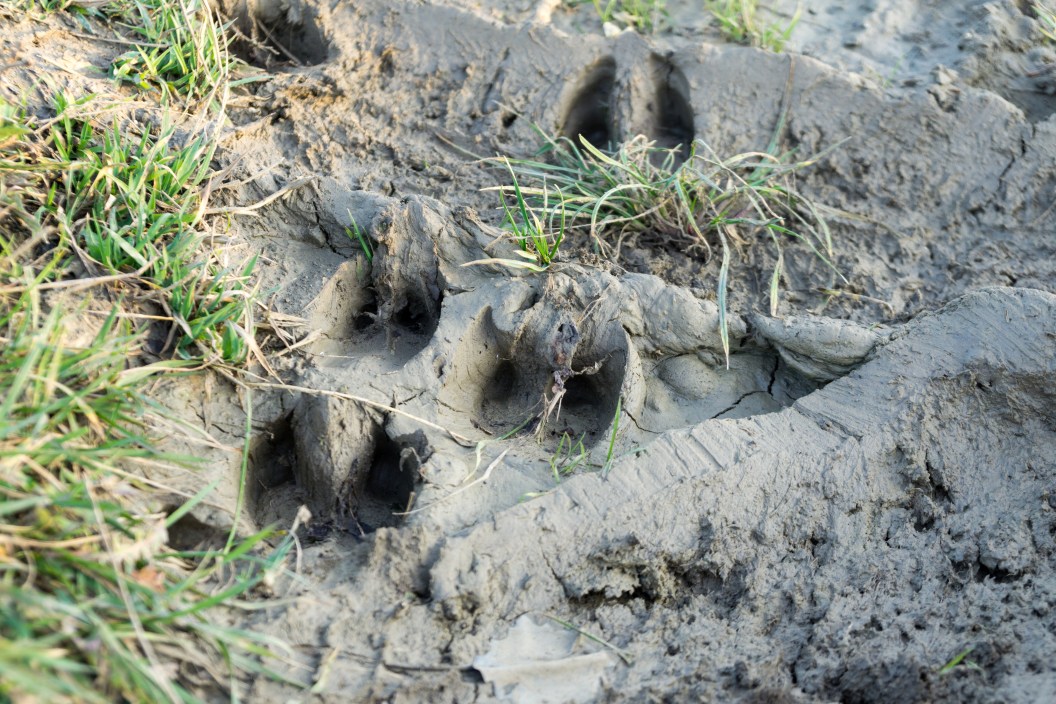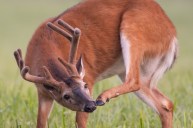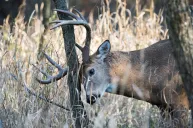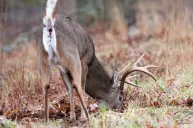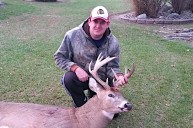Successful hunters spend a lot of time focusing on deer signs, such as scrapes, rubs, droppings, shed antlers, and so on. While most hunters often note fresh deer tracks, they don't often stop to think much about them: where the deer was going, whether it was trotting or walking, what size animal made the hoof prints, or whether the marks made are front tracks or hind tracks.
Could it have been a doe with two fawns? Maybe it was a displaced button buck. Or was it the buck of your dreams? While seemingly simple, deer prints are a bit more nuanced than you might realize. Learning how to interpret deer footprints a little more thoroughly can give you a more precise picture of deer behavior, and their movements patterns can begin to inform you on how and where to find them. Whether you are tracking on private or public lands, here's how to make the best of the deer hoof prints you find, based on my decades-long experience as a hunter in the field.
Identifying Deer Tracks
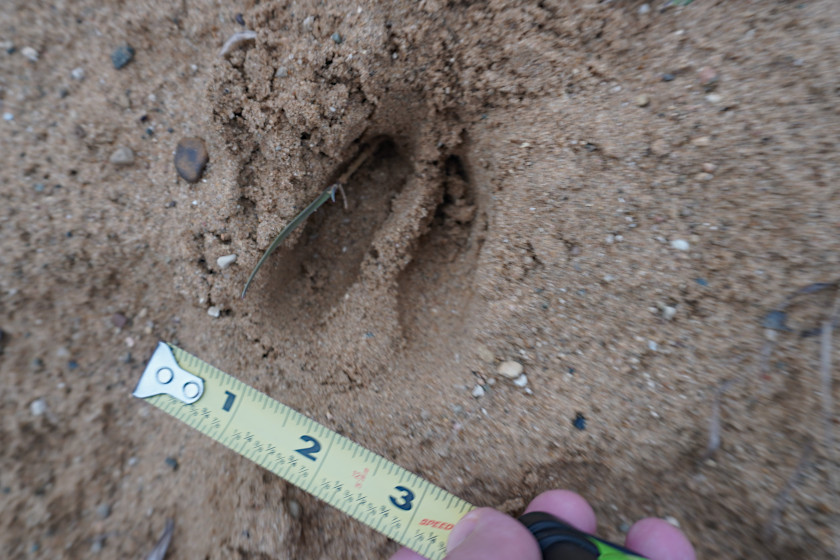
Travis Smola for Wide Open Spaces
Even if you're new to hunting, track identification is one of the easiest things to learn. Deer are cloven hoof animals, meaning their two toes are split. They leave a distinct, roughly heart-shaped, split-toed footprint that you don't need to be an expert tracker to identify. Of course, many other types of cloven hoof animals live in North America, so it becomes harder to determine the exact species in areas where mule deer and other ungulates live.
In addition, some hunters disagree on how best measure tracks. Some only measure the length and width of the mark made by the two cloven hooves. Others include the dew claws, which are vestigial and are not always visible in a footprint. Generally, an adult whitetail deer track, measuring just the two main parts of the hoof, will be 2 to 3 inches long and 2 to 2.5 inches across. Some larger bucks may have feet that are 3 inches across.
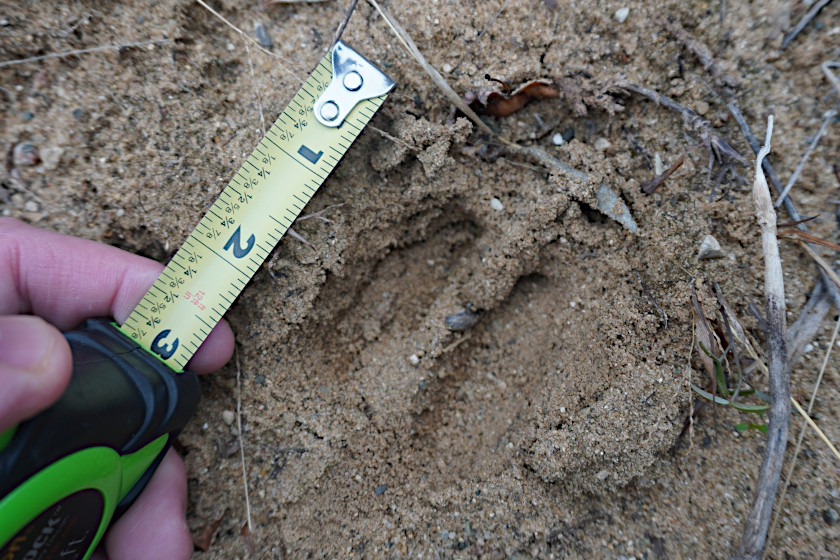
Travis Smola for Wide Open Spaces
The appearance of the tracks can vary depending on the deer's health and weight. It's probably a good bet that a deer with more pointed tracks is younger than one with prints where the toes are rounded. Sometimes deer experience uncontrolled growth of their hooves due to a condition called "sleigh hoof," which essentially causes the keratin in their hooves to grow uncontrollably, even to extreme discomfort. Fortunately, the condition is rare.
Finally, the newness of the tracks factors into their apparent size. Fresh tracks are least likely to be distorted and will show sharp detail and features, and therefore accurate size. The older tracks tend to get distorted and enlarged, especially in the snow.
Differences Between Buck and Doe Tracks
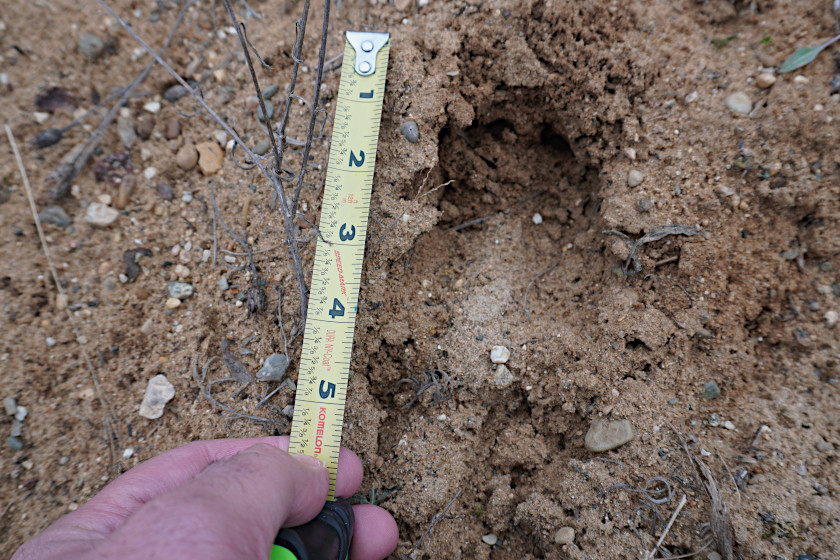
Travis Smola for Wide Open Spaces
Now, I've heard a lot of differing opinions and theories on how to analyze the deer tracks we find in the forest over the years. With all due respect to the old-timer hunters out there and their tracking abilities, I've concluded, after 23-plus years of hunting, there's no reliable way to tell the difference between doe tracks and buck tracks—not unless you see the deer make them.
I've witnessed exceptions to almost every "rule" I've ever been told on the subject. For instance, some people say that bucks drag their toes in the snow and that all snow tracks with drag marks are bucks. It sounds good in theory. I hate to burst their bubble, but during the Michigan firearms season just this year, I've personally watched several older and very large does dragging their toes in six to eight inches of snow in a food plot. It made me wonder how many times I've been fooled over the years.
Likewise, I don't believe the appearance of dew claws in the tracks indicates a buck—another "rule" I've been told over and over. I've seen plenty of fat does leave dew claw marks, given the right soil and situation. Whenever a deer leaps a fence, the front feet will almost always show dew claw tracks because all the animal's weight is coming down upon them. Likewise, if an animal rears up on its hind feet to snatch an apple or other forage out of a tree, you'll likely get dew claw marks with all the weight shifted to the rear.
I've also concluded that splayed tracks play no part in the gender-identification equation. Any deer that's fat enough will leave splayed toe marks, given the right soil, especially if they are on the move. In fact, the weight of the deer is another variable that's unreliable in terms of IDing deer tracks. I've harvested a few bucks with large bodies and thick necks that left very deep tracks. However, I've also seen rutting bucks that ran themselves thinner than the does in the area, leaving tracks some might mistake for lighter-weight female deer.
Every deer is distinctly different in its behaviors, so it's difficult for me to paint the tracks they leave with a broad brush. At the end of the day, I think too many variables come into play when determining with any finality whether a buck or doe made a track. Was the animal running or walking? What type of terrain was present? Even a fat deer will leave a little impression in sun-baked, hard-packed soil like you might find on the edge of a food plot in summer. Likewise, even a yearling's tracks can get distorted in the snow if they melt and enlarge.
That said, I believe it's possible to guess which sex of deer left a track, in a few cases. If the track is 3 to 3.5 inches or more wide (excluding dew claws) and is especially deep, there's a good chance you're following buck tracks—or at the very least, a rather large-bodied deer in the area should amply fill your freezer.
Things You Can Learn From Deer Tracks
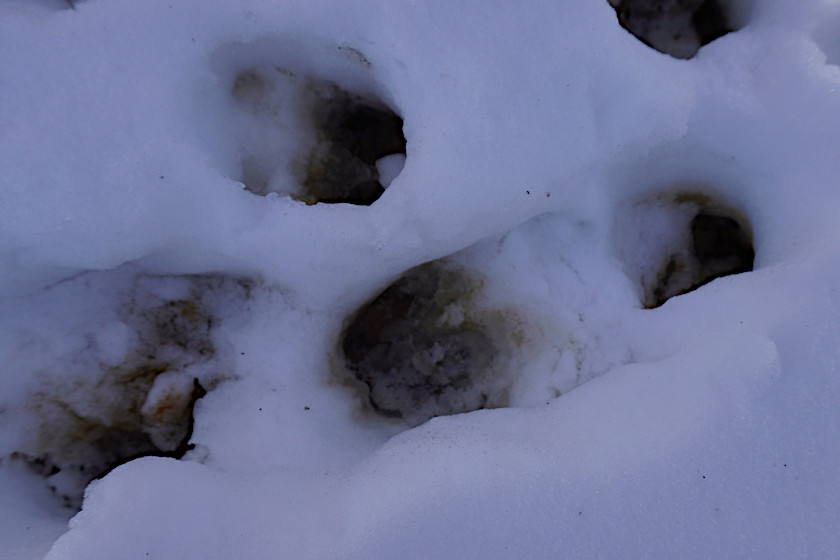
Travis Smola for Wide Open Spaces
While I don't think it's likely possible to identify a deer based on its tracks definitively, those footprints are still a vital clue while hunting. For one, tracks are an obvious signpost that a deer was in the area, and generally indicate their direction of travel. When analyzing tracks, stop and think about that direction of movement. Was the deer heading toward a food source? A bedding area? Do the tracks make it appear as if the animal was lazily sauntering its way along? Or was the animal on the move?
Watch also for paw prints of coyotes or other predators that may indicate the deer was fleeing. A close-up examination of the tracks will usually help reveal the speed of the deer's movements. Look at how the dirt, mud, or snow was displaced and in what direction. Debris flown a good distance from the track is usually an indicator of a running deer.
If you find a lot of tracks centralized in one area where it looks like the deer were milling around, odds are you've found a bedding area. Look for piles of scat that indicate the deer spend extensive time there. Then find the trails leading between these areas between food sources. Look for natural funnels in the cover, as these are the obvious ambush points to place a stand. You'll know a pinch point when you've found it. The tracks will likely be so thick you won't discern one track from another.
Other Deer Signs to Look For
Don't forget to keep an eye out for other obvious signposts of bucks when you're following deer tracks. Look for rubs where bucks have been raking their antlers on trees and scrapes they may have worked to mark their territory. While you can't always definitively identify tracks as having been made by bucks, plenty of hunters have had great success backtracking a larger set of tracks through the woods to find hidden bedding areas. It's probably best to do your tracking after it snows in the early off-season. You might be surprised by what clues you can gain for the following year.
Tracks are also an obvious clue of what forage works and doesn't work in your food plot, particularly for those in snowy climates to check after a snowfall to see what the deer focused on. If you have something that the deer pawed up the snow and dirt to get at, the odds are that's a good forage to focus on planting from now on. Doing a post-snow check on your plots will also help you identify where most deer are entering and leaving, which can help you figure out future stand placements. It can guide your scouting efforts for the following season.
It may seem obvious, but you'd be surprised how many hunters who complain they never see anything and then come to find out they're hunting in a place where there's no sign of deer of any kind. Following tracks may be the first best way to find a target. Patience is key, even if you suspect many tracks came from does and younger bucks. Where the does are, the bucks eventually follow.
